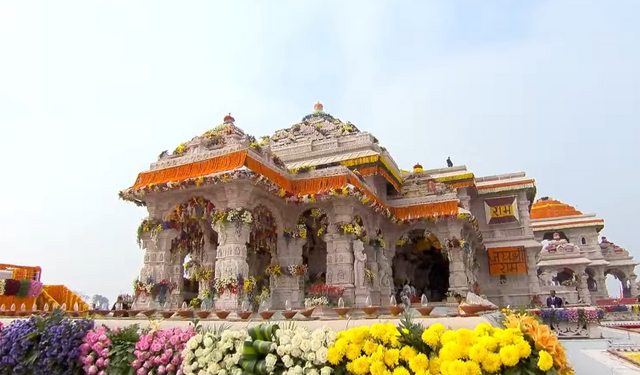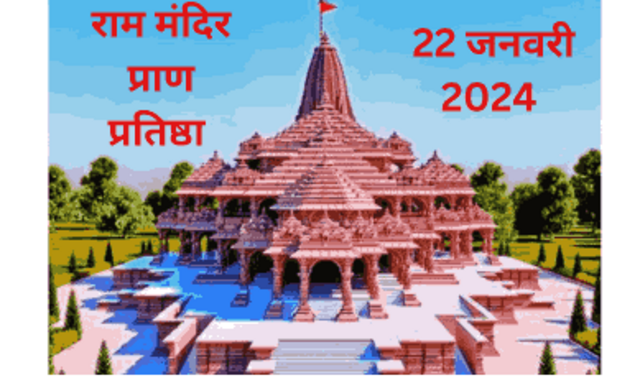Have you ever wondered what the grand Ram Mandir in Ayodhya looks like today? Since its historic inauguration in January 2024, millions of people worldwide have been searching for current images of this magnificent temple. Whether you’re planning a pilgrimage, researching for a project, or simply curious about this architectural marvel, finding authentic and current images of Ram Mandir can be both inspiring and informative.
The Ram Mandir stands as more than just a temple – it’s a symbol of faith, perseverance, and architectural brilliance that has captured the world’s attention. From its golden sandstone exterior to its intricate carvings, every photograph tells a story of devotion and craftsmanship that spans generations.
The Magnificent Ram Mandir: From Vision to Reality

When we talk about current images of Ram Mandir, we’re looking at the culmination of a dream that took decades to materialize. The temple’s journey from concept to reality is beautifully captured in the countless photographs documenting its construction and current state.
Opening Day Celebrations – January 22, 2024
The Ram Mandir, Ayodhya, is a grand Hindu temple inaugurated on January 22, 2024, at a site in Uttar Pradesh, India, believed to be the birthplace of the Hindu deity Ram. The inauguration day images show devotees thronged the streets of Ayodhya, praying in the holy river and performing rituals as the ceremony unfolded with people carrying saffron flags and wearing flowers around their necks.
These opening day photographs have become iconic, showing not just the temple’s physical beauty but also the emotional impact it had on millions of devotees. The images from that day capture the overwhelming joy and spiritual fervor that marked this historic moment.
Current Construction Status in 2025
While the temple opened for devotees in January 2024, the complete construction continues. Ram Temple Construction Committee chairperson Nripendra Misra on Friday said that the work on Ram Temple complex will be concluded by June 30, 2025 and the temple is expected to be completed by July 2025.
Current images show ongoing work on various aspects of the temple complex, including finishing touches on upper floors, installation of remaining sculptures, and completion of surrounding infrastructure. These construction photos provide fascinating insights into the meticulous craftsmanship involved.
Where to Find Authentic Current Images of Ram Mandir

Finding genuine, high-quality current images of Ram Mandir requires knowing where to look. Not all sources provide authentic or recent photographs, so it’s essential to use reliable platforms.
Official Temple Trust Social Media
The most authentic source for current Ram Mandir images is the official social media accounts managed by the Shri Ram Janmbhoomi Teerth Kshetra Trust. Their Instagram account regularly posts fresh photographs showing daily activities, festivals, and ongoing construction work.
These official channels ensure you’re seeing the temple exactly as it appears today, without filters or modifications that might misrepresent its current state. They often share behind-the-scenes images that you won’t find anywhere else.
News Media Photographs
Reputable news organizations frequently publish current images of Ram Mandir, especially during festivals or significant events. These photographs are typically taken by professional photojournalists and offer high-quality, authentic representations of the temple’s current appearance.
Major Indian and international news outlets maintain extensive photo galleries that are regularly updated with fresh content from Ayodhya.
Stock Photography Platforms
Professional stock photography websites offer a wide range of current Ram Mandir images. These platforms typically have strict quality standards and verification processes, ensuring the authenticity and current relevance of their photographs.
However, it’s important to check the upload dates and licensing requirements when using stock images for personal or commercial purposes.
Understanding Ram Mandir’s Current Architecture

Current images of Ram Mandir reveal intricate architectural details that make this temple truly exceptional. Understanding these elements helps you appreciate what you’re seeing in photographs.
The Three-Story Structure
The temple’s three-story design is clearly visible in current aerial and ground-level photographs. Each level serves a specific purpose and features unique architectural elements that reflect traditional Indian temple design.
Ground Floor Layout
Current images of the ground floor show the main sanctum where Ram Lalla’s idol is housed. The photographs reveal beautiful marble work, intricate carvings, and the darshan area where devotees gather for prayers. The lighting in these images often highlights the golden glow that emanates from the sanctum.
First and Second Floor Features
Recent photographs show ongoing work on the upper floors, which will house additional deities and ceremonial spaces. The installation of the Ram Darbar on the first floor–which includes the idols of Lord Ram, Sita ji, and Hanuman ji–will take place on May 23 according to recent updates.
Exterior Design Elements
The temple’s exterior is perhaps the most photographed aspect, and current images showcase its stunning beauty from multiple angles.
Golden Sandstone Construction
Current photographs highlight the temple’s golden sandstone construction, which gives it a warm, luminous appearance throughout the day. The stone’s color changes subtly with different lighting conditions, making each photograph unique.
The choice of this particular sandstone was deliberate, as its color and texture represent prosperity and spiritual significance in Hindu architecture.
Intricate Carvings and Sculptures
Recent close-up images reveal the incredible detail in the temple’s carvings and sculptures. Every surface tells a story from Hindu mythology, and current photographs capture these artistic elements with stunning clarity.
These images show everything from floral patterns to depictions of various deities, each carved with precision that speaks to the skill of contemporary Indian artisans.
Current Visitor Experience Through Images

Looking at current images of Ram Mandir gives you a preview of what visiting the temple actually feels like. These photographs capture not just the architecture but the entire spiritual atmosphere.
Darshan Hall Photography
Current images of the darshan hall show the organized queuing system, the peaceful atmosphere, and the moment of spiritual connection that devotees experience. These photographs often capture the emotional expressions of visitors, showing the profound impact of witnessing Ram Lalla’s idol.
The lighting in the darshan hall creates a divine ambiance that photographers have captured beautifully in recent images.
Temple Complex Surroundings
Modern photographs show the temple within its broader context, including the landscaped gardens, walking paths, and supporting facilities. These images reveal how the temple integrates with its environment while maintaining its majestic presence.
Current aerial photographs are particularly striking, showing the temple complex as a jewel set within the historic city of Ayodhya.
Seasonal Changes in Ram Mandir Images

One fascinating aspect of collecting current Ram Mandir images is seeing how the temple’s appearance changes with seasons and celebrations.
Festival Decorations
During major Hindu festivals, the temple receives special decorations that are captured in current photographs. These images show flower arrangements, colored lighting, and temporary installations that enhance the temple’s already impressive beauty.
Festival photographs also capture the increased devotee activity and the celebratory atmosphere that transforms the entire complex.
Weather Impact on Photography
Current images taken during different weather conditions show various aspects of the temple’s character. Monsoon photographs reveal how the golden stone looks against dramatic skies, while winter images often show the temple bathed in soft, golden sunlight.
Each season brings its own photographic opportunities and visual perspectives.
Digital Photography Tips for Ram Mandir
If you’re planning to take your own current images of Ram Mandir, understanding the best practices can help you capture the temple’s beauty respectfully and effectively.
Best Times for Photography
Current photographers often recommend early morning or late afternoon for the best lighting conditions. The golden hour enhances the temple’s natural golden color and creates dramatic shadows that add depth to photographs.
Avoid midday photography when harsh sunlight can create unflattering shadows and overexposed areas in your images.
Respectful Photography Guidelines
When taking current images of Ram Mandir, remember that this is a sacred space. Photography rules may vary depending on your location within the complex, and it’s essential to respect any restrictions.
Always maintain the dignity of the sacred space in your photographs and be mindful of other devotees who may not wish to be photographed.
Current Development Projects Around the Temple

Recent images of Ram Mandir often include the surrounding development projects that are transforming Ayodhya into a modern pilgrimage destination.
Infrastructure Improvements
Current photographs show new roads, improved lighting, and better crowd management systems. These infrastructure developments ensure that the temple remains accessible to the millions of visitors it receives.
Tourist Facilities
Recent images reveal new visitor facilities, including information centers, rest areas, and improved parking arrangements. These additions make the pilgrimage experience more comfortable while preserving the temple’s spiritual significance.
Sharing Ram Mandir Images Responsibly
As you collect and share current images of Ram Mandir, it’s important to do so responsibly and respectfully.
Copyright Considerations
Many current images of Ram Mandir are protected by copyright. Always check the source and licensing requirements before sharing or using images, especially for commercial purposes.
When sharing on social media, credit the original photographer or source whenever possible.
Social Media Best Practices
When sharing current Ram Mandir images on social media, use appropriate hashtags and descriptions that respect the temple’s sacred nature. Your captions should reflect the reverence and significance of what the images represent.
Consider sharing educational information along with your photographs to help others understand the temple’s historical and spiritual importance.
Conclusion
Current images of Ayodhya Ram Mandir offer us a window into one of India’s most significant spiritual and architectural achievements. From the historic inauguration in January 2024 to the ongoing construction work expected to complete by mid-2025, these photographs document a living piece of history that continues to evolve.
Whether you’re viewing official photographs from the temple trust, professional news images, or planning to capture your own pictures, each image tells part of the remarkable story of faith, dedication, and artistic excellence that the Ram Mandir represents. These current images serve not just as documentation but as inspiration, connecting millions of people worldwide to this sacred space.
As you explore the wealth of current Ram Mandir images available today, remember that each photograph captures more than just stone and mortar – it preserves moments of devotion, architectural brilliance, and cultural pride that will inspire generations to come. The visual journey through these images is itself a form of virtual pilgrimage, allowing people everywhere to experience the magnificence of this incredible temple.
Frequently Asked Questions
1. Where can I find the most recent images of Ayodhya Ram Mandir?
The most authentic and current images are available on the official Instagram account of Shri Ram Janmbhoomi Teerth Kshetra Trust (@shriramteerthkshetra). Major news websites and stock photography platforms like Getty Images and Adobe Stock also regularly update their Ram Mandir photo collections.
2. Is the Ram Mandir construction completely finished in 2025?
No, while the temple opened for devotees in January 2024, the complete construction is ongoing. According to official statements, the entire temple complex construction will be concluded by June 2025, with some final installations planned for May 2025.
3. Can I take photographs inside the Ram Mandir?
Photography rules may vary depending on the specific area within the temple complex. Generally, photography is allowed in certain areas but may be restricted in the main sanctum. Always check with temple authorities and follow posted guidelines to ensure respectful photography.
4. What makes Ram Mandir images so visually striking?
The temple’s golden sandstone construction, intricate carvings, and three-story architectural design create a visually stunning structure. The stone’s natural color changes with lighting conditions throughout the day, making each photograph unique and capturing different moods of this magnificent temple.
5. How can I verify if Ram Mandir images are authentic and current?
To verify authenticity, check the source’s credibility, look for recent upload dates, and cross-reference with official temple trust social media accounts. Be cautious of heavily edited or filtered images that may not accurately represent the temple’s current appearance.

